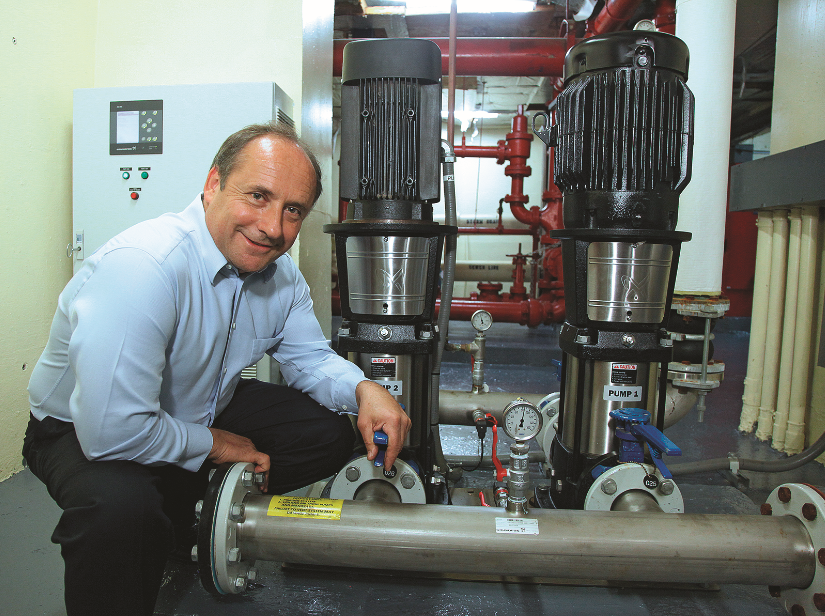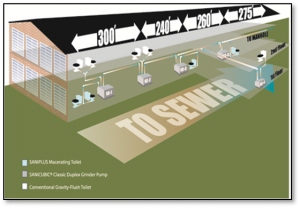- Feb
- 13
Posted on February 13, 2012 by Joel Williams
My deck is aching for a little spring cleaning. Every time I walk our dog, I see the discoloration and grime from the mold growth and mildew that result from the lack of a southern exposure. Our newest client, Wet & Forget, has an outdoor stain remover tailor-made for millions of homeowners like me.
The environmentally gentle, scrub-free exterior stain remover safely and gently removes unsightly moss, mold, mildew and algae stains on siding, roofs, decks, concrete and any outdoor surface imaginable. Check out these amazing before and after images from this composite deck – all without harmful bleach or back-breaking power washing. The beauty of this non-caustic, non-acidic, bleach-free cleaner is that it requires no scrubbing, no rinsing and no elbow grease.
Simply apply with a pump garden sprayer, then sit back and let Mother Nature do the rest. Results can be seen within days for those less contaminated areas and over several months for more distressed areas.
This product delivers on the “maintenance free” promise of composite decking materials. Spring cleaning, here I come.
- Jan
- 25
Posted on January 25, 2012 by Joel Williams
The potential efficiencies of water boosting systems from Grundfos are highlighted in the January cover story of Plumbing Mechanical Engineer, which profiles one apartment building’s jaw-dropping energy savings achieved through variable speed pump technology.
In fact, talk about putting your money where your mouth is- this project’s contractor was so confident in the potential energy savings that he paid for the new system himself — all in an effort to convince building management to invest in the efficient technology.
The gamble paid off in spades.
An independent project audit vindicated the daring claim by documenting a 90 percent energy savings over a one-week period in September 2010, and a 26-month payback period.
Moreover, the drop in power consumption translates to an annual utility cost reduction of nearly $18,160. Total project savings are estimated at $275,000 over the average 15-year pump lifespan. Despite removing 70 HP from this system, the computerized control, demand-based performance of the new pumping station averages just 30 percent capacity.
![Grundfos-CS-Parkview-0079[1]](../../wp-content/uploads/2012/01/Grundfos-CS-Parkview-00791.jpg)
- Jun
- 1
Commercial radiant temperature control from Uponor is highlighted in this feature article exploring one of Napa Valley’s most prestigious wineries. The article that appeared in the June issue of Environmental Design and Construction Magazine, illustrated why radiant was the only option to deliver the consistent and precise temperature control required for a new winery and barrel cellar. “Temperature control plays a major role in the winemaking process,” explains Kathryn Hall, owner of Hall St. Helena, who notes that the loss of temperature control can ruin an entire batch of wine and would result in a significant loss.
Indeed, the radiant system exceeded expectations, and the project’s environmentally friendly construction recently received the prestigious Gold Leadership in Energy and Environmental Design (LEED®) award. That recognition made Hall St. Helena, the first winery in California to achieve the top certification from the U.S. Green Building Council.
- Jan
- 21
Posted on January 21, 2011 by Joel Williams
 Mechanical Contractor Al Warren overcame the lack of drainage and long sewer line in a historic 19th century industrial building by using an innovative system from SFA Saniflo to pump and process waste without digging.
Mechanical Contractor Al Warren overcame the lack of drainage and long sewer line in a historic 19th century industrial building by using an innovative system from SFA Saniflo to pump and process waste without digging.
The project’s challenge was to tie the 1897 plumbing system into the municipal sanitary sewer system. Making matters worse, contamination was found nearly everywhere, so digging to install new sewer lines and plumbing wasn’t possible either. Plus, the Remington Rand building is 950 feet long – more than three football fields – so the project needed a solution for moving plumbing waste across this expanse plus another 100 feet or so beyond its walls to the sewer main.
 The result was the installation of five duplex grinders, positioned at intervals on the ground floor, along the length of the building. This created a “stair effect” that achieved the right pitch in the pipe to accommodate the extreme length of the sewer line.
The result was the installation of five duplex grinders, positioned at intervals on the ground floor, along the length of the building. This created a “stair effect” that achieved the right pitch in the pipe to accommodate the extreme length of the sewer line.
The duplex grinders are installed right on the floor – there is no need to dig. They can handle waste matter from multiple plumbing fixtures, without storing sewage, as sewage ejectors do. Each one pumps effluent up through small diameter pipe into the main and out to the sewer. They work in concert, handling cumulative waste for the entire two-story building.
The case study was featured in the Middletown Press.
































![Grundfos-CS-Parkview-0079[1]](../../wp-content/uploads/2012/01/Grundfos-CS-Parkview-00791.jpg)
